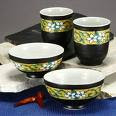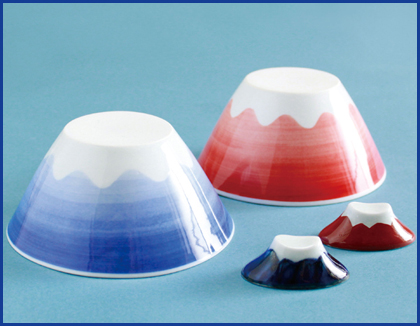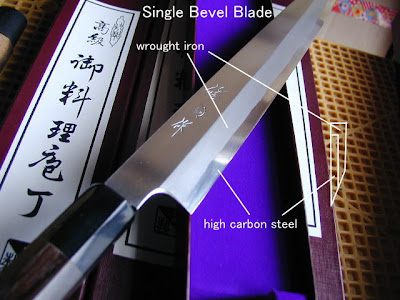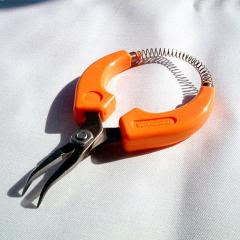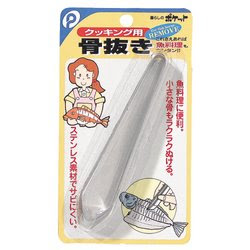[ . BACK to Worldkigo TOP . ]
:::::::::::::::::::::::::::::::::::::::::::::::::::::::::::::::::::::::::::::::::::::::::::::::::::::
WAGASHI SAIJIKI -
Sweets from Japan
:::::::::::::::::::::::::::::::::::::::::::::::::::::::::::::::::::::::::::::::::::::::::::::::::::::
Have a cup of green tea while
you explore the many LINKs of this saijiki.
Take your time !
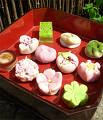
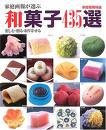 Please use your own browser to find a word !
Please use your own browser to find a word !
:::::::::::::::::::::::::::::::::::::::::::::::::::::::::::::::::::::::::::::::::::::::::::::::::::::
The love of the Japanese for sweets goes way back to the Heian period, where they were mostly made of fruits and bean paste and called
fruit (kudamono くだもの). Their origin was mainland China, so they were also called "Chinese cakes" 唐菓子.
Manju 饅頭, buns with a sweet inside, were also introduced from China.
With the appearance of white sugar during the Meiji period, sweet making became easier, with colored sugar pastes to form the most delicate little cakes.
Contrary to Western sweets, milk, butter and cream are not used for
wagashi.
Many Japanese sweets are prepared for each season, to be served at the tea ceremony or other ocasions by the learned people of Japan. Most names of these cakes allude to poetry、famous people or historic events.
Some cakes look simple on the outside but when you cut them, there is a colorful work or art made of various colored sugar pastes.
Hoorai 蓬莱 with a colorful inside , named after a place in China where the immortals and sges lived. The green symbolizes long life of a pine, the white and red stands for the auspicious plums.
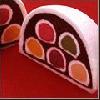 "Bun with Children inside" komochi manju 子持ち饅頭
"Bun with Children inside" komochi manju 子持ち饅頭 was served for weddings, wishing for many children. It was plain outside but then, as you see, all the children are inside!
Komochi manju, more photos
 source : facebook
source : facebook
:::::::::::::::::::::::::::::::::::::::::::::::::::::::::::::::::::::::::::::::::::::::::::::::::::::
This external LINK will make your mouth water.
 Seasonal Sweets from Japan
Seasonal Sweets from Japan
季節の和菓子
:::::::::::::::::::::::::::::::::::::::::::::::::::::::::::::::::::::::::::::::::::::::::::::::::::::
For the tea ceremony, these sweets are essential. They are then called
tea cakes, chagashi 茶菓子
Quote
Wagashi (Japanese sweets) are usually served before drinking matcha (powdered green tea) during a traditional Chanoyu gathering. Wagashi can also be enjoyed with good quality Japanese steeped green tea (sencha).
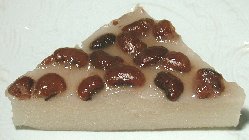
Some of the first dry sweets made with sugar came to Japan with the first Portuguese who arrived in the 16th century. During this time tea masters like Sen Rikyu used dried fruits, such as persimmons, and various nuts as an accompaniment to tea. Sugar was very scarce during this period so its use was limited to the upper class and a select group of Kyoto sweet makers. Seasonal sweets began to be made and used by tea masters in Kyoto during this time.
Today in Chanoyu, sweets made from beans and sugar, as well as various rice flours and other starches, are the basic ingredients for traditional wagashi. As the season changes so does the look and taste of the various sweets. During the winter, steamed cakes similar to the Chinese bun, are served. The outside is made from either wheat or rice flour and sugar and the inside from sweet bean paste called an. Zenzai, a sweet bean soup made from adzuki beans, is sometimes served during the colder winter months.
There is a variety of sweets called kinton that are made from filaments of bean paste layered around a ball of bean paste usually made from a different variety of bean. Color is added to the outer bean paste to reflect the feeling of the season. During the spring the colors range from pink, calling attention to the opening blossoms, to green which can show the transition from spring to early summer. Various autumnal colors are used during the fall season. White is a favorite color during the winter to reflect the beauty of snow.
Summer sweets use starches such as kuzu (kudzu), sugar and bean paste and are often served chilled or wrapped in bamboo leaves. Kanten (agar agar) is another popular ingredient for summer sweets that can be chilled.
The host in a Chanoyu gathering usually makes the sweets that will be served. Careful consideration is given to the theme of the gathering and what the guests will enjoy.
Eating seasonal wagashi, accompanied by Japanese green tea, is a truly wonderful experience.
© Chanoyu.com
Click HERE to see some more !
:::::::::::::::::::::::::::::::::::::::::::::::::::::::::::::::::::::::::::::::::::::::::::::::::::::::::::::::::::::::::::
 source : facebook
source : facebook
:::::::::::::::::::::::::::::::::::::::::::::::::::::::::::::::::::::::::::::::::::::::::::::::::::::::::::::::::::::::::::
In Kyoto, there is one shrine dedicated to the
"Deity of Sweets", deity of candy 菓子の神
. Kaso Jinja 菓祖神社 .
Kasojin 菓祖神 (かそじん) Deity of Sweets
in the compound of Yoshida Jinja 吉田神社内
- - - - - Deities in residence
Tajimamori no Mikoto 田道間守命
Hayashijooin no Mikoto 林浄因命 Hayashijoin
:::::::::::::::::::::::::::::::::::::::::::::::::::::::::::::::::::::::::::::::::::::::::::::::::::::::::::::::::::::::::::
Wagashi no Hi 和菓子の日 Wagashi Day
June 16

:::::::::::::::::::::::::::::::::::::::::::::::::::::::::::::::::::::::::::::::::::::::::::::::::::::::::::::::::::::::::::
Wagashi are sometimes divided into several types as
namagashi (“moist” i.e. raw and uncooked confections),
higashi (dry confections) and
yakigashi (grilled confections), but as most types belong to the category of namagashi, this division is not very useful. And there are also new types as “chilled wagashi!”
- Reference Chagashi -
 source : facebook
Hana-omote (花面) Higashi
source : facebook
Hana-omote (花面) Higashi
Traditional Kyoto wagashi in the shape of Noh masks, Chokyu-do (長久堂) store in Kyoto. Higashi (干菓子 or 乾菓子, dry confectionery).
:::::::::::::::::::::::::::::::::::::::::::::::::::::::::::::::::::::::::::::::::::::::::::::::::::::
an あん 餡 red bean paste
das An; süßes Bohnenmus
. . . koshi-an, こしあん (漉し餡) a smooth puree.
püriertes An; püriertes süßes Bohnenmus
. . . tsubushi-an, つぶしあん (潰し餡 )chunky.
grob püriertes An
. . . sarashi-an, 晒あん powdered
getrocknetes, pulverisiertes Koshian
kanten かんてん (寒天)agar-agar
Agar-Agar; Gelatine aus Rotalgen.
:::::::::::::::::::::::::::::::::::::::::::::::::::::::::::::::::::::::::::::::::::::::::::::::::::::
. haribukku, haribuku, haributsuku 貼仏供(はりぶっく))
sweet Buddhist offerings pasted on a frame .
From temple Ishiyamadera 石山寺, Shiga
:::::::::::::::::::::::::::::::::::::::::::::::::::::::::::::::::::::::::::::::::::::::::::::::::::::
. manjuu 饅頭と伝説 Legends about Manju steamed buns .
manjuu まんじゅう (饅頭) steamed buns
manju buns filled with bean jam
imomanjuu, imo manjuu いもまんじゅう / 芋まんじゅう manju from sweet potatoes
kusaki manjuu 草木まんじゅう Kusaki Manju
WASHOKU : The Origin of Manju ... Hakata, Fukuoka
Chikuho manju 筑豊饅頭
Manju with the faces of Japanese politicians
Aso manjuu with chocolate 麻生まんじゅう
Koizumi manjuu 小泉まんじゅう
Ozawa manjuu おざわまんじゅう, 小沢饅頭
Shinchan manjuu 晋ちゃんまんじゅう
. . . CLICK here for more MANJUU Photos !
kiteki manjuu 汽笛饅頭(きてきまんじゅう)
Manju like a ships whistle
From Kagoshima, 姶良郡湧水町. They are made with milk. From the store Kichimatsu 吉松, who also makes ekiben lunchboxes.
. . . CLICK here for Photos !
kurumi manjuu くるみ饅頭 manju with walnuts
. . . CLICK here for Photos !
Daruma Manju だるま饅頭
Manju from the KANTO region
meoto manjuu 夫婦饅頭 manju for a good couple
Ooishi manjuu 大石饅頭 Oishi manju rice cakes
In Memory of Oishi Kuranosuke and the 47 ronin at temple Sengaku-Ji
Traditional Folk Toys : manjuu kui ningyo 饅頭食い人形 Boy eating Manju
der Manjuu
mit süßem Bohnenmus gefüllter gedämpfter Hefekloß
mit Walnuss gefüllt
:::::::::::::::::::::::::::::::::::::::::::::::::::::::::::::::::::::::::::::::::::::::::::::::::::::
. Mochi もち (餅) ricecakes, rice cake of all kinds
Dazaifu Umegaemochi 梅がえ餅 / 梅ヶ枝餅 "Plum Branches Mochi"
plum-flavored sweet bean-filled rice cakes
In Memory of Sugawara no Michizane, who loved plum blossoms, and lived in Dazaifu in exile. The shrine Dazaifu Tenmangu 大宰府天満宮 is in his honour and the mochi are sold there.
From Kasanoya かさの家.
. . . CLICK here for Photos !
das Mochi, Reiskuchen
:::::::::::::::::::::::::::::::::::::::::::::::::::::::::::::::::::::::::::::::::::::::::::::::::::::
nanban gashi なんばんがし 南蛮菓子 "sweets from Southern Barbarians"
Kuchen aus westlichen Ländern.
. senbei せんべい (煎餅) rice cracker
Nenga Senbei ... for the New Year 2009, with DARUMA
der Senbei, Reiskräcker, Kräcker aus Reismehl
:::::::::::::::::::::::::::::::::::::::::::::::::::::::::::::::::::::::::::::::::::::::::::::::::::::
External LINKs
Basho Haiku and Japanese Sweets
Nakamura Yoshihide 18th generation of Kikyoya / 桔梗屋伊左衛門
Sweets through the Year
Shogetsudo (shoogetsudoo 松月堂
NHK Bi no Tsubo, Beautiful Things About Sweets, With many photos !
Wagashi - Japanese Traditional Sweets
With a lot of further LINKs.
:::::::::::::::::::::::::::::::::::::::::::::::::::::::::::::::::::::::::::::::::::::::::::::::::::::
:::::::::::::::::::::::::::::::::::::::::::::::::::::::::::::::::::::::::::::::::::::::::::::::::::::
Spring
Peony Cakes, Botamochi ぼた餅 牡丹餅,
round rice cakes with sweet beans paste
Read more here:
Botamochi Ceremony, botamochi eshiki
牡丹餅会式(ぼたもちえしき)
Botamochi Cakes and Saint Nichiren and
Botamochi Jizo Bostatu ぼた餅地蔵
Botamochi haiku by Issa
:::::::::::::::::::::::::::::::::::::::::::::::::::::::::::::::::::::::::::::::::::::::::::::::::::::
. camellia rice cakes 椿餅 tsubaki mochi
with the green shining leaf of a camellia on top of it
:::::::::::::::::::::::::::::::::::::::::::::::::::::::::::::::::::::::::::::::::::::::::::::::::::::
cherry blossom cookies, cherry blossom rice cakes
Hanakae Matsuri 花換祭 / 花換祭り Flower-exchanging festival at shrine Kanesaki-gu, Fukui prefecture, and the sakura cherry blossom cookies 桜クッキー
Cherry Blossom Rice Cakes, sakuramochi 桜餅
They are also eaten at the Doll's festival.
 Haiku and the Doll Festival (hina matsuri, Japan)
Haiku and the Doll Festival (hina matsuri, Japan)
senshitsu ni hina no hi tote sakuramochi
船室に雛の日とて桜餅
in the ship's cabin
we eat sakuramochi -
it's Doll's Festival
Kyoshi 高浜虚子
(Tr. Gabi Greve)
On his trip to France
MORE
Sweets and Haiku for the Doll Festival
:::::::::::::::::::::::::::::::::::::::::::::::::::::::::::::::::::::::::::::::::::::::::::::::::::::
. Dandelion つづみぐさ sweet tsuzumigusa
:::::::::::::::::::::::::::::::::::::::::::::::::::::::::::::::::::::::::::::::::::::::::::::::::::::
Korin Plums (koorin no ume 光琳の梅),
named after the painter Ogata Korin, who painted a most famous screen with red and white plum blossoms.
Sweets For Spring and the New Year
Many examples on this external LINK.
Click HERE to see the famous folding screen !
The Plum and Haiku
Lucky Plum Sweets (fukubai 福梅) More Photos
. Saho-hime 佐保姫
Princess of the Spring Wind
Taorizakura (teorizakura) たおりざくら(手折桜)
cherry blossoms broken by hand
. . . CLICK here for Photos !
:::::::::::::::::::::::::::::::::::::::::::::::::::::::::::::::::::::::::::::::::::::::::::::::::::::
 norikoboshi こぼし Norikoboshi
norikoboshi こぼし Norikoboshi
This is the name of a camellia tree in the compounds of the temple Todai-Ji in Nara. Its blossoms are red and white mixed 糊こぼし椿.
. . . CLICK here for Photos !
A nearby sweets shop has made some colorful little sweets of this name, sold especially during the spring ceremonies at the hall Nigatsu-Do in the temple compounds.
Lit. "left-overs of glue", which is used to make paper camellia blossoms for the temple festiva.
:::::::::::::::::::::::::::::::::::::::::::::::::::::::::::::::::::::::::::::::::::::::::::::::::::::
:::::::::::::::::::::::::::::::::::::::::::::::::::::::::::::::::::::::::::::::::::::::::::::::::::::
Summer
Aozashi 青挿 (あおざし, 青ざし)
"fresh wheat sweets"
A sweet made of parched green wheat flour and twisted like a thread.
:::::::::::::::::::::::::::::::::::::::::::::::::::::::::::::::::::::::::::::::::::::::::::::::::::::
Awayukikan 淡雪羹 あわゆきかん
soft snow white jelly
..... 沫雪羹(あわゆきかん),泡雪羹(あわゆきかん)
"Lockerer-Schnee-Gelee"
. . . CLICK here for Photos !
Chimaki, Rice cakes for the Boy's festival, 粽 May 5
chimaki 茅巻(ちまき)
rice dumpling wrapped in bamboo leaves
chimaki yuu, binding a chimaki 粽結う(ちまきゆう)
chimaki toku, opening a chimaki 粽解く(ちまきとく)
sasa chimaki 笹粽(ささちまき)Chimaki wrapped in Sasa grass
..... sasa maki 笹巻(ささまき)
komo chimaki, from wild rice 菰粽(こもちまき)
suge chimaki 菅粽(すげちまき)wrapped in Suge grass、
kashiwamochi, kashiwa mochi 柏餅 (かしわもち)
Sweet rice cakes for Japanese boy's festival, wrapped in an oak leaf.
The oak leaves become dry in autumn, but stick to the tree until the new buds are coming out in the next spring. Therefore these leaves are a symbol for the continuation of a family, carried on by the first-born oldest son.
. . . CLICK here for Photos !
. Somin Shoorai Fu 蘇民将来符 Somin Shorai amulet .
and Somin Chimaki
:::::::::::::::::::::::::::::::::::::::::::::::::::::::::::::::::::::::::::::::::::::::::::::::::::::
Doyoo mochi 土用餅 (どようもち)
mochi rice cakes for the dog days
. . . CLICK here for Photos !
Dog Days (doyoo, Japan) Hundstage
:::::::::::::::::::::::::::::::::::::::::::::::::::::::::::::::::::::::::::::::::::::::::::::::::::::
Hattai 麨 (はったい) Roasted and ground barley flower
mugi kogashi 麦こがし(むぎこがし)
mugi iriko 麦炒粉(むぎいりこ)
muki koosen 麦香煎(むぎこうせん)
kogashi こがし, neri kogashi
練りこがし(ねりこがし)、
mizu no ko 水の粉(みずのこ)
tea from roasted barley flower, hattai cha
はったい茶(はったいちゃ)
Hotaru 蛍 Firefly, fireflies as sweets
Kyoto
:::::::::::::::::::::::::::::::::::::::::::::::::::::::::::::::::::::::::::::::::::::::::::::::::::::
kajoogashi 嘉定菓子(かじょうがし)Kajo-cakes
Kingyokutoo 金玉糖 (きんぎょくとう)
"Gold sugar ball"
Sweet made by boiling sugar and agaragar together. It hardens when cooling.
gingyokutoo 銀玉糖(ぎんぎょくとう)"silver sugar ball"
kingyoku kan 金玉羹(きんぎょくかん)
. . . CLICK here for Photos !
Kokeshimizu 苔清水 "moss in clear water"
made with a transparent jelly
. . . CLICK here for Photos !
:::::::::::::::::::::::::::::::::::::::::::::::::::::::::::::::::::::::::::::::::::::::::::::::::::::
Mitarashi Dango .. Dumplings on skewers
kigo for late summer
Mitsumame 蜜豆 (みつまめ) "sweet beans"
bean jam, agar, and pieces of fruit served in syrup
anmitsu 餡蜜(あんみつ)
with fruit, furuutsu mitsumame フルーツ密豆(ふるーつみつまめ)
..... furuutsu anmitsu
フルーツ餡蜜(ふるーつあんみつ)
. . . CLICK here for Photos !
:::::::::::::::::::::::::::::::::::::::::::::::::::::::::::::::::::::::::::::::::::::::::::::::::::::
minazuki 水無月 (みなずき) sweets for June, the 6th month
Kyoto
:::::::::::::::::::::::::::::::::::::::::::::::::::::::::::::::::::::::::::::::::::::::::::::::::::::
Mizu yookan, Jelly Bean Cake and haiku 水羊羹 (みずようかん)
Yokan (yookan) from the Sugar Road of Nagasaki
Ogi yokan 小城羊羹(おぎようかん) and more
:::::::::::::::::::::::::::::::::::::::::::::::::::::::::::::::::::::::::::::::::::::::::::::::::::::
Mugi rakugan 麦落雁 (むぎらくがん)
Dried sugared cakes with barley
rakugan are hard, dainty sweets made of soybean and rice flour mixed with sugar. They can be pressed in beautiful small molds to get seasonal patterns.
They are often used for the tea ceremony.
. . . CLICK here for Photos !
:::::::::::::::::::::::::::::::::::::::::::::::::::::::::::::::::::::::::::::::::::::::::::::::::::::
"Peony in water", mizubotan 水牡丹
Details, includidng recipe
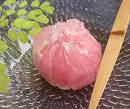
:::::::::::::::::::::::::::::::::::::::::::::::::::::::::::::::::::::::::::::::::::::::::::::::::::::
. Shiratama 白玉 (しらたま) white rice-flower dumplings
:::::::::::::::::::::::::::::::::::::::::::::::::::::::::::::::::::::::::::::::::::::::::::::::::::::
Spikemoss (iwahiba, iwamatsu)
Sellaginella tamariscina and Matsuo Basho
:::::::::::::::::::::::::::::::::::::::::::::::::::::::::::::::::::::::::::::::::::::::::::::::::::::
Ubatama 鳥羽玉 /老玉 "Black Lily Seed"
Wakabakage 若葉陰 "the shade of young leaves"
with a little goldfish swimming in agar-agar
. . . CLICK here for Photos !
Yatsuhashi, Iris Bridge Cake, やつはし 八橋
The name is a reference to the famous
Tales of Genji.
Look at more photos HERE !
:::::::::::::::::::::::::::::::::::::::::::::::::::::::::::::::::::::::::::::::::::::::::::::::::::::
Zeri ゼリー jelly
comes in many flavors and preparations.
:::::::::::::::::::::::::::::::::::::::::::::::::::::::::::::::::::::::::::::::::::::::::::::::::::::
:::::::::::::::::::::::::::::::::::::::::::::::::::::::::::::::::::::::::::::::::::::::::::::::::::::
Autumn
Wrapped Rice Cakes, ohagi おはぎ、 お萩
Offerings for the ancestors graves.
Eaten at the spring equinox, these sweets are called "Botamochi", see above.
WKD . Autumn Equinox and Haiku
:::::::::::::::::::::::::::::::::::::::::::::::::::::::::::::::::::::::::::::::::::::::::::::::::::::
Korin Chrysanthemums, Kooringiku 光琳菊
.....
Chrysanthemum and Haiku with more photos of the sweets.
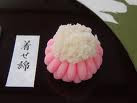
This cake is called "Under the cotton blanket", kisewata 着せ綿.
. kiku no kisewata 菊の着綿 as KIGO
山寺や茶の子のあんも菊の花
yamadera ya cha no ko no an mo kiku no hana
mountain temple -
even the sweets served for tea
in the form of chrysanthemum
Kobayashi Issa
Tr. Gabi Greve
MORE PHOTOS
Japanese sweets in the form of Chrysanthemum !
:::::::::::::::::::::::::::::::::::::::::::::::::::::::::::::::::::::::::::::::::::::::::::::::::::::
Kozue no aki 梢の秋 "autumn in the treetops"
Enjoy a maple leaf as it turns colors.

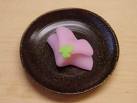 Morning Glory
Morning Glory
with a famous haiku by Chiyo-Ni.
:::::::::::::::::::::::::::::::::::::::::::::::::::::::::::::::::::::::::::::::::::::::::::::::::::::
kuri kanoko 栗鹿の子(くりかのこ)
Kanoko sweet with chestnuts
 kanoko, lit. bambi
kanoko, lit. bambi
The sweet looks like a bambi pattern with light spots.
A speciality from the Tamba region.
kuri kinton 栗きんとん chestnut paste
kuri yookan 栗羊羹 chestnut jelly cake
..... kurimushi yookan 栗蒸し羊羹
kuri manjuu 栗饅頭 chestnut paste buns
maron gurasse マロン=グラッセ marrons glaces sweet
. Chestnut, sweet chestnut (kuri 栗) .
Kanoko sweets 鹿の子(かのこ)は、和菓子の一種
They are made with 3 or 4 layers of different colors and pastes.
The outside is then covered with a paste called
kanoko mame 鹿の子豆 "bambi beans" in honey.
Finally they can be wrapped in
kanten gelatine to make them look translucent.
kanoko mame are adzuki beans 小豆, kintoki mame 金時豆, uzura mame うずら豆 and uguisu mame ぐいす豆 etc.
Sometimes small pieces of chestnut are used, as in the sweet above.
Sweets made with white bean paste are called
Kyoo kanoko 京鹿の子
Kanaoko bambi sweets from Kyoto.
. . . CLICK here for Photos !
These sweets have first been made in Ningyocho, a part of Edo, in the year Hooreki , about 1751.
 kanoko mochi
kanoko mochi 鹿の子餅 made with rough adzuki beans paste.
:::::::::::::::::::::::::::::::::::::::::::::::::::::::::::::::::::::::::::::::::::::::::::::::::::::
like a persimmon, hatsuchigiri 初ちぎりnamed after a famous poem by Chiyo-Ni:
shibukaro ka shiranedo kaki no hatsu chigiri
渋かろか 知らねど柿の 初ちぎり
are they bitter?
I do not know, but - well,
the first take of a persimmon
. Kaga no Chiyo-Ni 加賀千代(尼) .
Wenn people get married, they do not know the outcome of the endeavor until they have had the first try. With the varieties of sweet and bitter persimmons, you do not know the taste until you have tried!
. discussing chigiri ぎり .
- WKD - Persimmon, kaki 柿 and Haiku
:::::::::::::::::::::::::::::::::::::::::::::::::::::::::::::::::::::::::::::::::::::::::::::::::::::
Ricecakes like little wild boars, inoko mochi 猪子餅, 亥の子餅
They were eaten on the 10th day of the 10th month 亥月亥日 of the wild boar, according to the old lunar calendar, now October. They are made from seven types of flower and adzuki beans. The custom started at the Imperial palace in Kyoto (亥子餅の儀式). They are said to bring good health to the ones who eat them.
Made for the autumn festival of Wild Boars (inoko matsuri いのこ祭り for the deity of Wild Boars 亥の神様, to see him off to the mountains for his winter rest.
The mochi war white and red anko is pasted around them. There are 12 in a common year and 13 in a leap year (uruudoshi 閏年), placed in a wooden masu as offering to the deity.
Wild Boar and Haiku
The deity on a wild boar
Marishiten 摩利支天 Marishi-Ten
:::::::::::::::::::::::::::::::::::::::::::::::::::::::::::::::::::::::::::::::::::::::::::::::::::::
Tsukimidango, tsukimi dango 月見団子 dumplings for moon viewing
tsukimizake, 月見酒(つきみざけ)rice wine for moon viewing
:::::::::::::::::::::::::::::::::::::::::::::::::::::::::::::::::::::::::::::::::::::::::::::::::::::
. fukuremanjuu no iwaibi ふくれ饅頭の祝日
day for celebrating whith puffed manju ricecakes
During the Feast of the Assumption of Mary, August 15.
Mariä Himmelfahrt
. . . CLICK here for Photos !
:::::::::::::::::::::::::::::::::::::::::::::::::::::::::::::::::::::::::::::::::::::::::::::::::::::
Winter
 source : boredpanda.com/cat-candy-sweets
candy cats sleeping in the warm kotatsu!
source : boredpanda.com/cat-candy-sweets
candy cats sleeping in the warm kotatsu!
.......................................................................
WKD : Pounding Rice for Rice Cakes
草の庵年取餅を買にけり
kusa no io toshitori mochi o kai ni keri
thatched hut--
the year's last rice cakes
are bought
Issa
Tr. by David Lanoue
:::::::::::::::::::::::::::::::::::::::::::::::::::::::::::::::::::::::::::::::::::::::::::::::::::::
Gionboo 祇園坊(ぎおんぼう)"priest in the Gion quarters"
This sweet resembles a dried persimmon, but is only made of
an paste and sugar powder.
. . . CLICK here for Photos !
Kogarashi kinton. First Sleet Drizzel Sweets 木枯らし金団
This sweet is eaten in November, when the first new tea is tasted during the tea ceremony.
Withering Wind, kogarashi and Haiku
:::::::::::::::::::::::::::::::::::::::::::::::::::::::::::::::::::::::::::::::::::::::::::::::::::::
Shigure no Matsu 時雨の松 Pine in icy rain, a Haiku Sweet
Matsuo Basho at Temple Jojakkoji, Ogura, Kyoto
taiyaki 鯛焼き sea bream waffles
:::::::::::::::::::::::::::::::::::::::::::::::::::::::::::::::::::::::::::::::::::::::::::::::::::::
New Year
Sweets from Kanazawa
Lucky Waffles with Toys inside, fukutoku senbei 福徳せんべい
One of the toys is a little Princess Daruma, so make sure to click on the above link to look at my article !
The following two sweets from Kanazawa are also explained in detail in this article.
lucky waffles -
I hope for Daruma
to bring me luck !
Gabi Greve, January 2000
Fortune Cookies "like the Pheasant's eye", tsuji uranai fukujisoo 辻占福寿草
Read about Pheasant's eye (fukujusoo) and Haiku
"Wishing for a long life at the New Year", 「kusudama 久寿玉」.
. WKD : kusudama 薬玉 (くすだま) "medicine ball" .
:::::::::::::::::::::::::::::::::::::::::::::::::::::::::::::::::::::::::::::::::::::::::::::::::::::
. Sweets Market at Matsumoto
(ame ichi) 飴市(あめいち)
A festival in memory of the armies of warlords Takeda Shingen and Uesuki Kenshin.
They sell
fukuame, fuku ame 福飴(ふくあめ)
"sweets for good luck" for the God of Good Luck, Ebisu.
:::::::::::::::::::::::::::::::::::::::::::::::::::::::::::::::::::::::::::::::::::::::::::::::::::::
There are eight famous snack from China (hasshuu no karagashi 八種の唐菓子, 八種唐菓子). This custom of serving them even now shows the strong influence of the Chinese culture on the aristocracy during the Heian period.
Details are here
Fruit (kudamono) snacks from ancient China
:::::::::::::::::::::::::::::::::::::::::::::::::::::::::::::::::::::::::::::::::::::::::::::::::::::
TOPICS for Haiku
. Dragon sweets for 2012 干支の菓子 : 辰 .
Shooyu purin 小豆島醤油プリン Soy Sauce Pudding from Shodoshima
Sweets from Tohoku 東北の甘いもの
*****************************
Worldwide use
*****************************
Things found on the way
 source : heniadir
source : heniadir
:::::::::::::::::::::::::::::::::::::::::::::::::::::::::::::::::::::::::::::::::::::::::::::::::::::
Daruma and Sweets
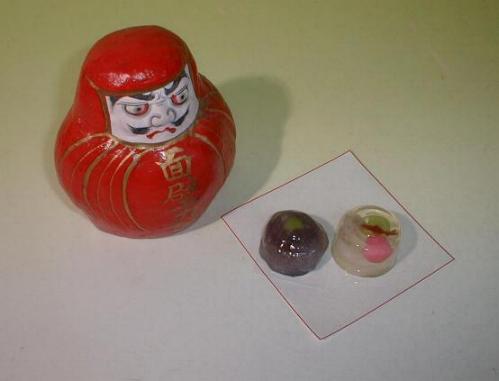
Click on the photo to see more Japanese sweets and folk dolls arranged for the pleasure of your eye and mouth!
:::::::::::::::::::::::::::::::::::::::::::::::::::::::::::::::::::::::::::::::::::::::::::::::::::::
. . . . . MORE
Hokkaido Sweets 北海道スィーツ Sweets from Hokkaido
Shikoku Sweets 四国スイーツ Sweets from Shikoku
Senbei, sembei 煎餅 (せんべい) rice crackers, sweet and salty
Oiri, yomeiri おいり 嫁入り sweets for the bride from Marugame, Sanuki, Shikoku
*****************************
HAIKU
Japaneses Sweets !
what a cultural treat
for the innocent soul !
Gabi Greve, whilst writing this article in December 2006
*****************************
Related words
Sweets and snacks named after a HAIKU
*****
Haiku Sweets (haika 俳菓) Japan
. Food named after Waka poetry 和歌 .
*****
Chagashi ... LIST of recipes
*****
Snack served with tea (cha no ko, o-cha no ko) Japan
*****
Cheap sweets (dagashi) and Daruma だるま飴,駄菓子
******** Washoku, Japanese Food and Haiku
BIG ICECREAM / photo from Kume
. Sweets which are not KIGO
. WASHOKU SAIJIKI .
:::::::::::::::::::::::::::::::::::::::::::::::::::::::::::::::::::::::::::::::::::::::::::::::::::::::::::::::::::::::::::
[ . BACK to DARUMA MUSEUM TOP . ]
[ . BACK to WORLDKIGO . TOP . ]
- #wagashisweets -
:::::::::::::::::::::::::::::::::::::::::::::::::::::::::::::::::::::::::::::::::::::::::::::::::::::::::::::::::::::::::::
